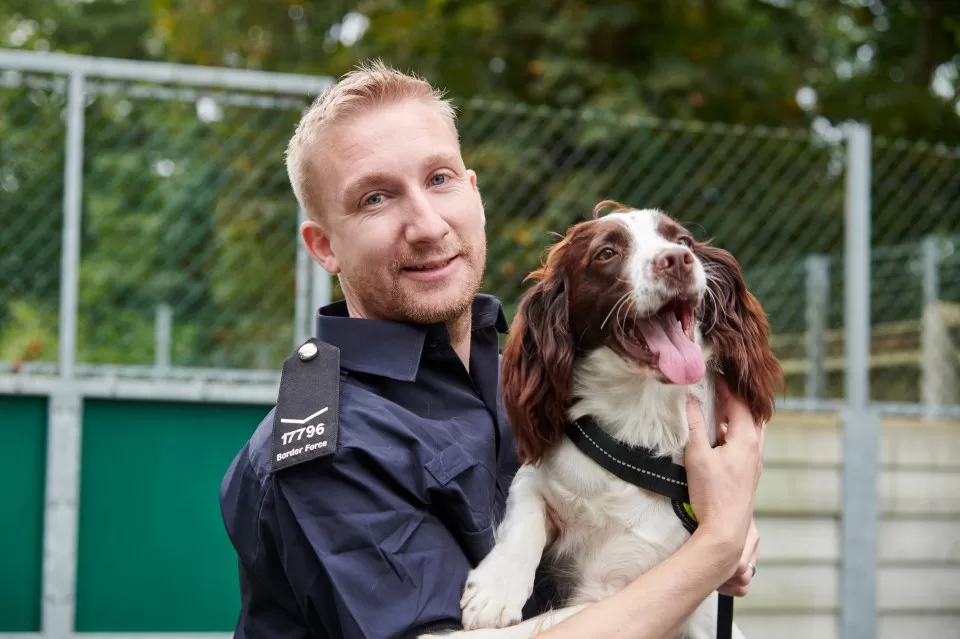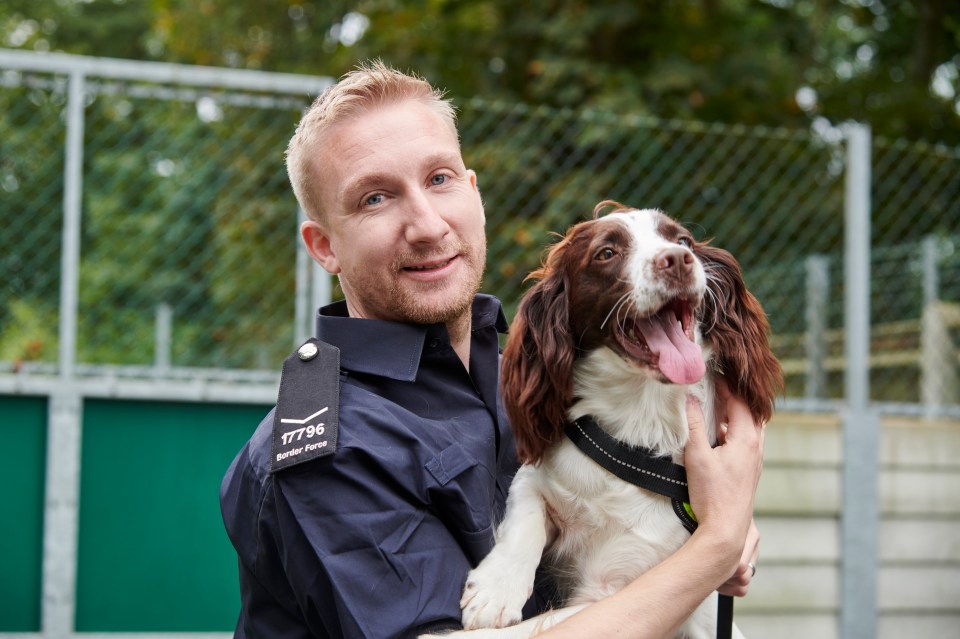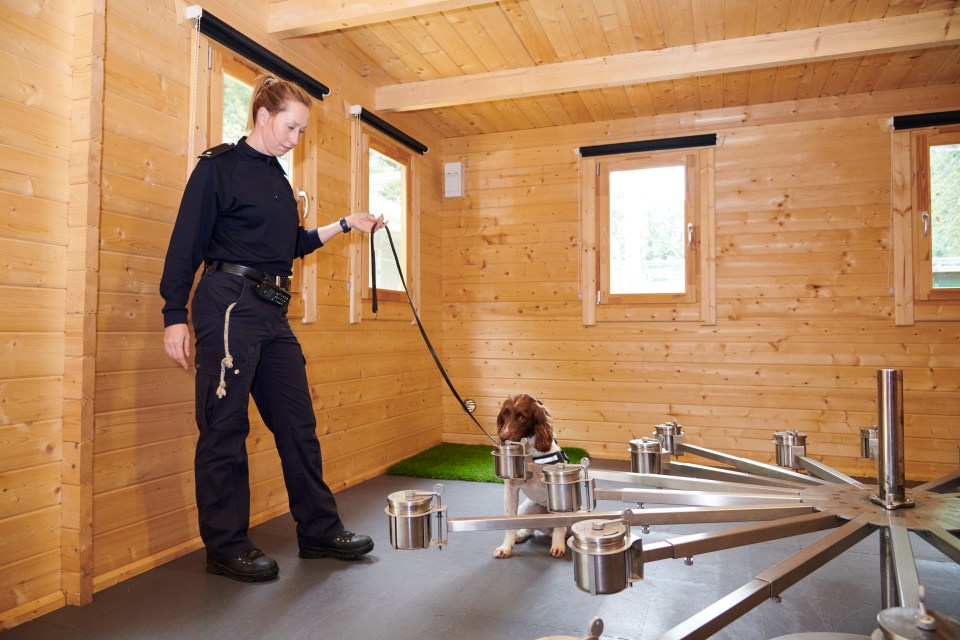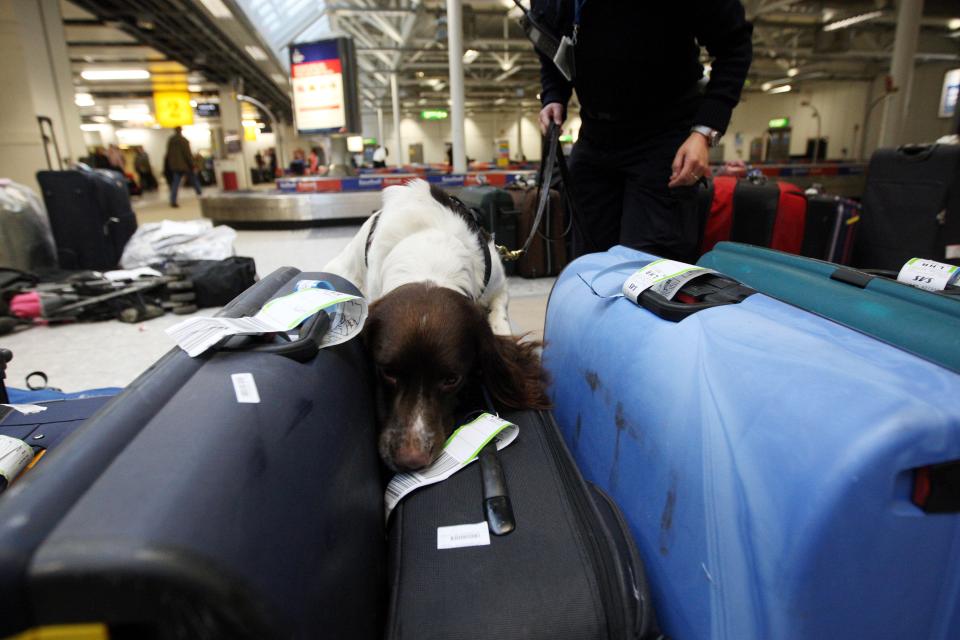DAN and Jos frantically check parcels to see if they are filled with a terrifying killer drug flooding into the UK.
They are being trained as part of a new Border Force team set up to stop the inward flow of lethal nitazenes — a man-made drug 100 times more potent than heroin.
And the pair have the best qualifications going.
They are springer spaniels, who have been trained to sniff out the super-strength synthetic opioids, as well as other dangerous Class A imports fentanyl and xylazine being smuggled in.
Latest figures from the National Crime Agency showed there have been 284 deaths in Britain linked to nitazenes since July 2023.
Only tiny quantities are needed, so crime gangs tend to sneak it into the country by post.
Now it is hoped that Border Force’s pioneering pups will be the key to intercepting the deadly parcels — and saving lives.
The number of people dying from narcotic misuse in Britain is now among the highest in Europe, and has tripled over the past 30 years.
NCA director general Graeme Biggar said: “With nitazenes you can absolutely die the very first time you take it and you very often don’t know you are taking it.
“A teenager might be taking a drug thinking it is something else, and it’s nitazene. It’s incredibly strong and you die.
“We are deeply worried about it. Any hint of nitazenes gets top priority across the UK.”
Figures suggest there is a weekly average of 49 deaths by drug poisoning in England and Wales involving opiates such as heroin, oxycodone, fentanyl and synthetic opioids.
In March, 21-year-old Harry Durose, from Tameside, Greater Manchester, died after taking what police believe was fake Valium laced with nitazenes.
And warnings were issued in Swindon, Wiltshire, after four drug-related deaths since May this year were potentially linked to a batch of heroin laced with nitazenes.
Alex Harpum, 23, had had a promising future as an opera singer when he died in July 2023.
The cause was first ruled as the heart defect sudden arrhythmic death syndrome, but eight months later tests showed he had taken a substance contaminated with a nitazene.
Records showed he had previously tried to buy the prescription-only anti-anxiety medication Xanax online.
Scent carousel
Most of the smuggling gangs use Royal Mail or other parcel firms to try to get the opioids into Britain.
Currently, Border Force only examines post for drugs if there is a known risk or if they have received intelligence.
The force uses many methods to try to stop forbidden goods entering UK ports, airports, stations and postal depots, but dogs remain indispensable.
At the Border Force kennels at Gatwick Airport in West Sussex, where the landmark new synthetic opioid training is taking place, there are nine resident dogs.
Class A drugs such as the nitazenes which are being used for teaching purposes come from approved pharmaceutical sources or seized goods.
Tracie Jackson, Training and Technical Lead of the National Dog Team, said: “The most important thing for a detector dog is a strong hunt drive.
“They can be any age over 12 months and initially undertake a four-week suitability assessment. We educate them using play and reward and see how they are with noise and in operational areas.
“As they progress, target scents are then introduced.”
After 12 weeks the pups “pass out” and get their licence and official harness before beginning their careers protecting our country.
Tracie said: “Most work until they are around eight, when they get a well-deserved retirement, very often going home to live with their favourite person — their handlers.”
Spaniel Hunter, six, and Lottie, five, are being trained on the unit’s scent carousel, a pick-and-mix-style roundabout containing a selection of everyday distraction scents which the dogs encounter while working, such as airline tape, tea bags and food.
But among them is also a small bag of heroin.
The carousel is used to initiate new recruits, as well as offering regular refresher courses for the more experienced snouts.
It is a walk in the park for top dog Hunter, who specialises in Class A scents. He immediately finds the prohibited item and is rewarded with a stroke and a doggy treat.
Unsavoury finds
Hunter’s nose for trouble resulted in one of Border Force’s biggest canine busts this year when he sniffed out 72.6kg of cocaine at Gatwick.
With a street value of £3,630,000 the drugs had been suspended in fizzy drink cans in a cargo container arriving on a flight from the Caribbean in July.
As well as drugs, more unsavoury finds have included half a monkey corpse, which was hidden in a suitcase on a flight from the Far East.
Since 1978, Britain’s various border control agencies — before Border Force was created in 2012 it was the UK Border Agency — have used detector dogs to sniff out dodgy items including Class A drugs, foodstuffs, tobacco, firearms and even cash.
Some are even trained to find banned items including elephant ivory and rhino horns. There are 64 detector dogs working at locations such as Heathrow, Gatwick and even Calais.
They are deployed to border crossing points, along with their assigned handlers, who partner them for their whole career, to screen huge amounts of checked-in baggage, cargo, freight, courier mail, passengers and vehicles.
Most of the dogs are multi-odour-trained but specialise in certain scents. Traditional gun breeds, such as springer spaniels, Labradors, retrievers and beagles, are ideal, as they want to hunt and retrieve.
The human cost from these substances entering the country could be incredibly high.
Danny Hewitt
With the prevalence of nitazenes growing at an alarming rate, Dan and Jos, both one, are the trailblazing trainees charged with learning to sniff out the synthetic opioids.
Border Force director Danny Hewitt said: “We believe we are the first border agency globally training dogs to de- tect nitazenes, and our emphasis is to get ahead of the threat these substances pose.”
UK Border Force hopes to increase the number of dogs trained to detect synthetic opioids, and Danny said: ‘‘The human cost from these substances entering the country could be incredibly high.”
Jos and Dan’s vital work could prevent hundreds of casualties, but the Border Force team never forget they are also just two young pups.
After long shifts, doggy downtime is vital, and the four-legged agents are allowed to enjoy the unit’s playground, sandpit and paddling pool.
They can also visit the in-kennel grooming parlour for a spot of pampering — and that’s not to be sniffed at.






